The author, Carlo Vialu, PT, MBA, is co-creator of SeekFreaks. He loves promoting function and participation for children and youth with disabilities, from our assessment to our interventions, via his courses on various assessment tools at Apply EBP. More information on these courses after the article below.
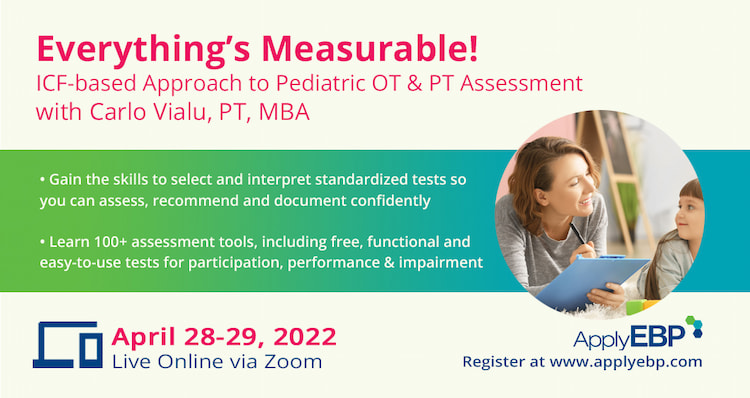
Everything’s Measurable! 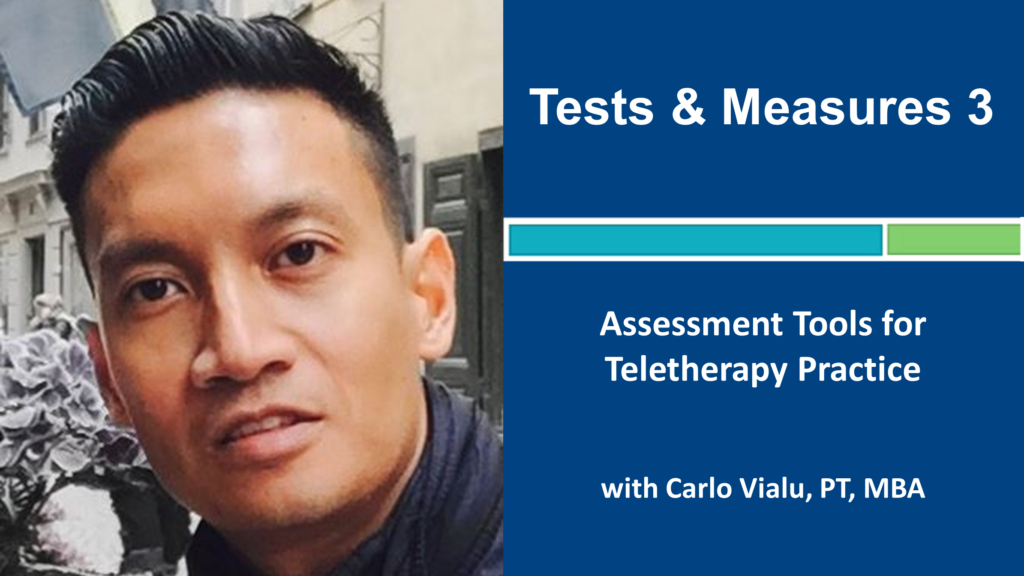
Teletherapy Assessment Tools 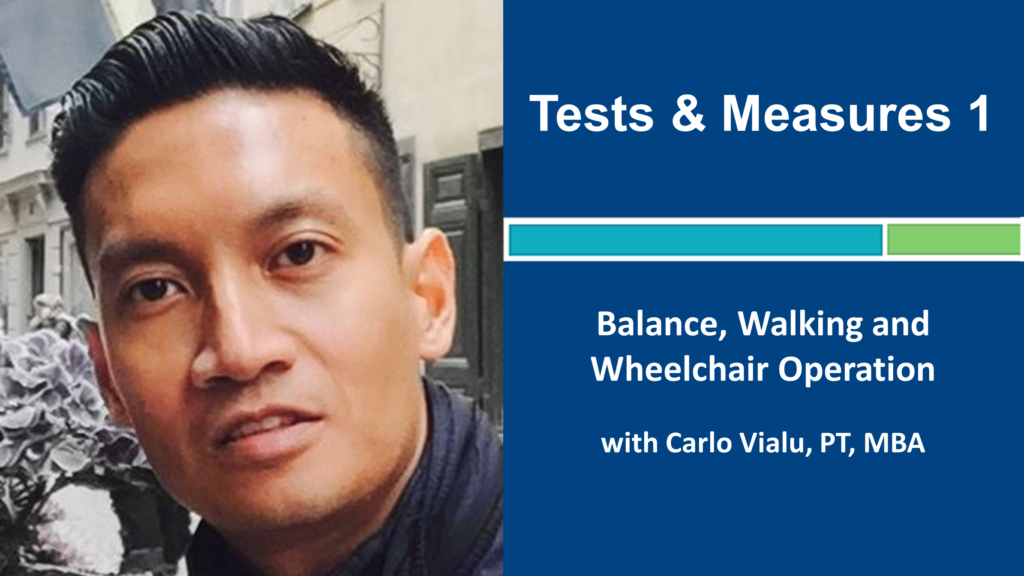
Balance, Walking & Wheelchair Tests
[smbtoolbar]
In our last article, 11 Ways to Unleash the Power of Power Mobility, I talked about the importance of outcome measures to support the use of the device, and to serve as motivation for students. So I looked through various research on standardized wheelchair mobility tests with the goal of coming up with a “go-to testing toolbox.”
Putting Together a Testing Toolbox
I pictured this toolbox as having the minimal amount of tests to cover most needs of measuring the child’s progress when learning to use either a manual or a power wheelchair. Each therapist can then occasionally augment this testing toolbox with 1 or 2 additional tests that are specific to their caseload, setting or a particular child’s needs.
I narrowed down the tests based on two criteria: applicability to children and adolescents and requiring a minimal amount of equipment so that it can be easily conducted within the school environment. I excluded, for example, the Shuttle Ride Test (SRiT) because it requires a testing CD for pacing, and the Power-Mobility Indoor Driving Assessment (PIDA) because it was created for residents of long-term care facilities.
Since my aim is to have a minimum number of tests, careful review of each test was necessary to ensure a complementary set of tests where each has its own unique usage and characteristics.
You will notice that the chosen tests mostly fall under the Activity level of the International Classification of Function (ICF). Participation tests relevant to wheelchair usage remain elusive. Field et al (2015) searched for potential tools to measure participation of children using power mobility devices, but concluded that none were best suited for the purpose.
In the absence of suitable participation tests, I recommend ecological assessment to record the student’s participation in school activities. Together with the student, you can also decide to measure participation tasks that are meaningful to him/her. In the previous article I gave the following as examples: amount of time playing with peers in the playground; support and cues needed to get on and off the bus lift; number of occasions child joined the family during weekend activities such as grocery shopping and going to the park.
Promising Wheelchair Operation Tests
The toolbox includes 7 promising tests, plus a bonus resource. I emphasize the word “promising” since the research behind these tests are not extensive. At a minimum, articles have been published on the validity and/or reliability of the tests or their previous iterations. Some tests were only tested on adolescents and/or adults, but not necessarily younger children. It is my hope that more studies will be conducted on these and other tests pertinent to wheelchair use in the near future, and that I may inspire you to undergo such research yourselves.
I do not recommend using these tests as norm-referenced tests for 3 reasons:
- as discussed above, there has not been extensive research on the properties of these tests
- research has been done on very small groups, and sometimes in adults only, which limits the use of reference data that’s available
- wheelchairs differ, so it is hard to calculate the effect of a particular child’s device on test performance
Instead, I suggest that you utilize the tests as criterion-referenced tests. You can measure baselines of the child’s performance from which you can create goals for your intervention. You can then monitor the progress of your students on a regular basis.
You should also observe the child’s performance of the test. Look at the body mechanics and the equipment. Record the testing environment (e.g., carpet, wood, tiles or concrete; quiet or busy). Determine ways that you can improve performance by manipulating any or all of the 3, such as teaching a child to improve his/her propulsion strategy, identifying necessary environmental modifications, and modifying components of the device.
The 7 Tests
The 7 tests consist of 3 propulsion tests for various distances, 1 test that includes operating different parts of the wheelchair, 1 test that focuses on the child’s level of learning, and 2 that seeks the child’s perception.
The first 3 tests are for manual wheelchair users. I ordered these 3 tests from the shortest to the longest propulsion distances. The 1-Stroke Push Test (1SPT), as the name implies, requires a single stroke; the Wheelchair Propulsion Test (WPT) requires traveling 10 meters; while the the 6-Minute Push Test (6MPT), requires continuous propulsion for 6 minutes (albeit with allowable rests).
The Wheelchair Skills Tests (WST) rates wheelchair operation skills other than just propulsion. It also includes different versions for a manual wheelchair, power wheelchair and scooter. The Assessment of Learning Power mobility use (ALP) can be utilized across the whole spectrum of learners, including novices (described as having no or vague idea of using a power mobility device). To round up the toolbox, I also included perceived exertion scales and the Self-Efficacy Wheeled Mobility (SEWM) scale. It is always important to get the child’s perspectives of his/her own abilities and exertion.
Use a combination of tests when possible to gain more insight into the child’s performance. For example, using the ALP and the WST together can help you determine the child’s learning stage (from the ALP) and their performance of specific tasks (from the WST).
Finally, notice the absence of a screening test or a criteria that can help you decide whether the student should use a wheelchair or power mobility device, or not. As discussed in 11 Ways to Unleash the Power of Power Mobility, we should expand our criteria of potential users, and not exclude those with limited mobility or those that we deem as having “poor cognitive readiness.”
Now we are ready to learn the tests. I provide you with the articles that I recommend you read to understand the test and to learn the standardized way of administering them.
1. 1-Stroke Push Test (1SPT) – measures the distance a wheelchair can travel with one stroke using both hands, if possible
- Test instructions: Click here for the 1SPT procedures
- Time for administration: 5 minutes
- Equipment needed: floor tape, 2 cones, measuring tape
- Why I like this test:
- It is a very quick test.
- You can observe the child’s propulsion technique and recommend how it can be made more efficient (e.g., moving hands further back).
- It is significantly correlated with the 6MPT. Note that correlation does not necessarily mean cause-and-effect; however, I would go out on a limb to say that this correlation may mean that the ability to push far with 1 stroke enables an individual to travel farther in 6 minutes.
- Limitations:
- It is less functional than the 6MPT, WPT or WST, since a single stroke is typically insufficient for meaningful travel
- It can also be argued that the high correlation with the 6MPT may mean this test is not necessary if the child can complete the 6MPT. (For the reasons that I listed above of why I like this test, l argue that the 2 tests are more complementary than duplicative.)
2. Wheelchair Propulsion Test (WPT) – measures the time it takes to travel 10 meters with a wheelchair; the number of cycles and propulsion methods are also recorded
- Test instructions: Click here for the Wheelchair Propulsion Test procedure and form
- Time for administration: 5 minutes
- Equipment needed: timer, floor tape
- Why I like this test:
- It allows different propulsion methods depending on the individual’s abilities (or disabilities), including use of feet.
- It tests both forward and backward propulsions.
- Observations are important in this test, and are recorded on the WPT form.
- Limitations:
- It has not been tested on children.
- The average age of the subjects in the above study is 58 y/o; the range is 18-91 y/o. However, it is still easy to see how this is a reasonable test to use for individuals of any age, including children.
3. 6-Minute Push Test (6MPT) – based on the 6-minute walk test, it measures the total distance traveled via wheelchair in 6 minutes on a 10-meter course
- Test instructions: Click here for the 6MPT procedures
- Time for administration: 10-15 minutes
- Equipment needed: timer, floor tape, cones, heart rate monitor
- Why we like this test:
- Measures ability to wheel for longer distances and time than any of the tests above
- Limitations:
- The low correlation between the 6MPT and heart rate reported in the study means that it may not be a good test for aerobic fitness. The authors recommended further study.
- The straight course requires sharp 180 degree turns on either end that may require more skill and more time than an oval course. Since you will be using the test as a criterion-referenced test, I recommend using an oval course. Record the measurements of the course so that it can be replicated during a re-test. Use the same dimension course for all your students so that you may compare performance.
4. Wheelchair Skills Test (WST) – includes questionnaires and testing forms for operating a manual wheelchair, a power wheelchair and a scooter
- Test instructions: Click here for the WST manual, questionnaires and testing forms
- Time for administration:
- The test takes 30 minutes.
- The questionnaire takes 10 minutes.
- Equipment needed:
- The test requires different testing surfaces and environments (5 and 10 degree inclines, curbs, gaps, etc.; see manual) and straps for safety. The manual describes each testing requirement in detail.
- The questionnaire does not require any equipment.
- Why I like this test:
- It includes tests using a manual wheelchair, a power wheelchair and a scooter.
- It tests other wheelchair skills beyond just propulsion (e.g., operating the brakes, going up and down curbs and incline).
- The manual includes wheelchair games which may be useful for wheelchair training.
- It includes advanced skills, such as performing a wheelie which may be appropriate for older students.
- Limitations:
- It is a long test to administer.
- It requires different testing surfaces and environments. Since you are using this as a criterion-referenced test, it is ok to skip tests if a certain testing environment is unavailable. Record this carefully for future re-testing.
- A spotter using straps is needed for some items to ensure safety.
5. Assessment of Learning Power Mobility Use (ALP) – an instrument that assesses the user’s actual phase in the process of learning powered mobility use
- Test instructions: Click here for the article which contains the ALP and discussion of its use
- Time for administration: It depends on your familiarity of the child. It can be as short as <5 minutes if you are familiar with the child or a long observation of the child to determine the correct learning phase.
- Equipment needed: none
- Why I like this test:
- It includes the whole continuum of learning from novice to expert; therefore, it can be used with very young users, very new users, and users with severe cognitive difficulties
- There are no scores, and no “pass” or “fail.” Because of this, it is a refreshing test. It focuses on the child’s learning phase no matter how low.
- It can also be used to figure out how to facilitate progression to a higher phase.
- Limitations:
- Reliability studies were conducted on previous instruments from which the ALP originated from; there are no reliability studies on the ALP itself.
- It does not address specific wheelchair operation skills. Rather it focuses on the learning phase of the user. As the learner reaches Phase 4: Advanced Beginner Phase you may want to combine it with another test that looks at specific wheelchair operation skills.
6. Perceived Exertion Scales – These are pictorial scales that asks a child his/her self-perception of the effort he/she is putting in to complete a task. A perceived exertion scale can be combined with the tests above to get the child’s qualitative view of their own exertion.
- An example of perceived exertion scales for children:
- The 5-point face scale for perceived self-exertion
- Since you will be using this as a criterion-referenced test, you can also create your own based on the sample above, just make sure you use the same one every time.
- Why I like this:
- It can provide the child’s view of his/her own exertion that may not be evident just by observing the child.
- This can even be used for individual components of certain tests, such as the WST.
- Limitation:
- This one is obvious: it is meaningless on its own. It should be combined with other tests.
7. Self-Efficacy in Wheeled Mobility (SEWM) Scale – a 10-item questionnaire that measures the user’s belief in his/her ability to engage in and overcome challenges when using a manual wheelchair
-
- Test instructions: Click here for the SEWM article. Click here for the form.
- Time for administration: 10 minutes
- Equipment needed: none
- Why I like this test:
- Self-efficacy is the “I can do this!” attitude. It is an element of self-determination that is essential for success. Having high self-efficacy means that the student feels empowered to face and overcome challenges.
- I recommend using this test, especially for students who would like to independently utilize their manual wheelchair in the community.
- The test reminds us that working on If the student scores low, you know that you will need to work not just on the child’s skills but also on the child’s self-efficacy and self-determination.
- Limitations:
- The SEWM was developed for individuals with Spinal Cord Injuries (SCI) and it was tested only on 18+ year old athletes and individuals who participate in recreational activities.
- Knowing that it has not been tested for validity and reliability for younger children, use it with caution for young children, .
BONUS RESOURCE
Physical Function Related to Wheeled Mobility(?)
- This is not an actual test. Kerfeld et al (2013) used cognitive interviewing to ask children about their physical function. They were also asked for suggestions on items that should be included in a questionnaire that suits the experiences and needs of individuals who use wheelchairs. The result is a suggested list of statements to include in such a questionnaire. I particularly like that the statements are in the 1st-person (e.g., I could wheel more than one block) so that the child can self-report his or her abilities. I leave it up to you, whether you would like to use this list, and in which manner. Perhaps, this can even inspire you to undertake research into using a similar questionnaire to address the paucity in testing tools suitable for children.
I hope that you find this toolkit useful. I also encourage you to keep on reading new research articles where you may discover new tests for wheeled mobility.
Finally, if there are tests that you use that I did not include above, share it through the comment below and let us know where to find it and why you like it.
Readers of this article also read:
The 4 Cs of Letters of Medical Necessity that Gets Equipment Funded
Article Review: 11 Ways to Unleash the Power of Power Mobility
The 4 Pillars of School-based PT Assessment
Article Review: Role of PT in Promoting Lifelong Fitness
Join Carlo Vialu and other experts at these all evidence-based, all practical continuing education courses:

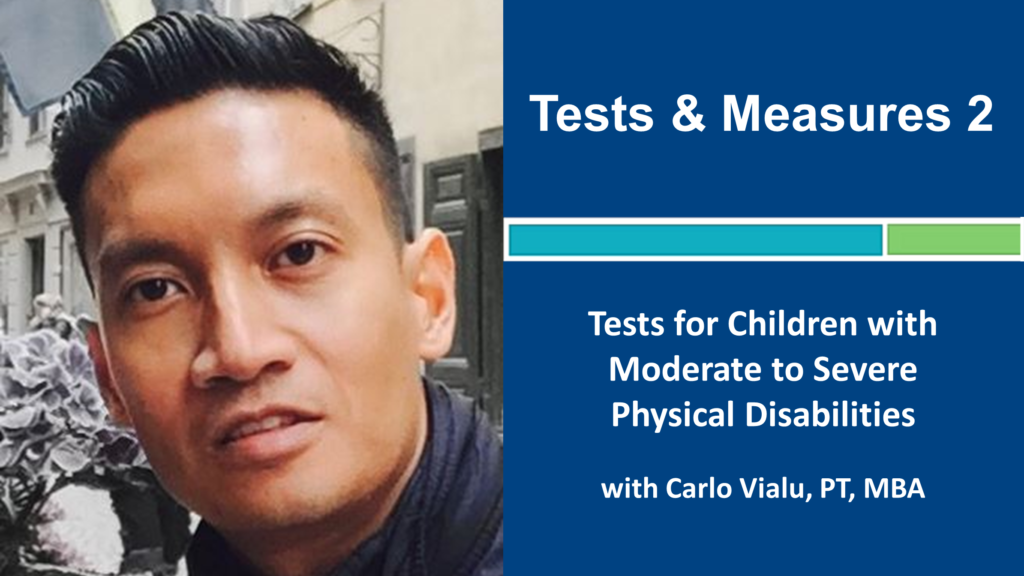

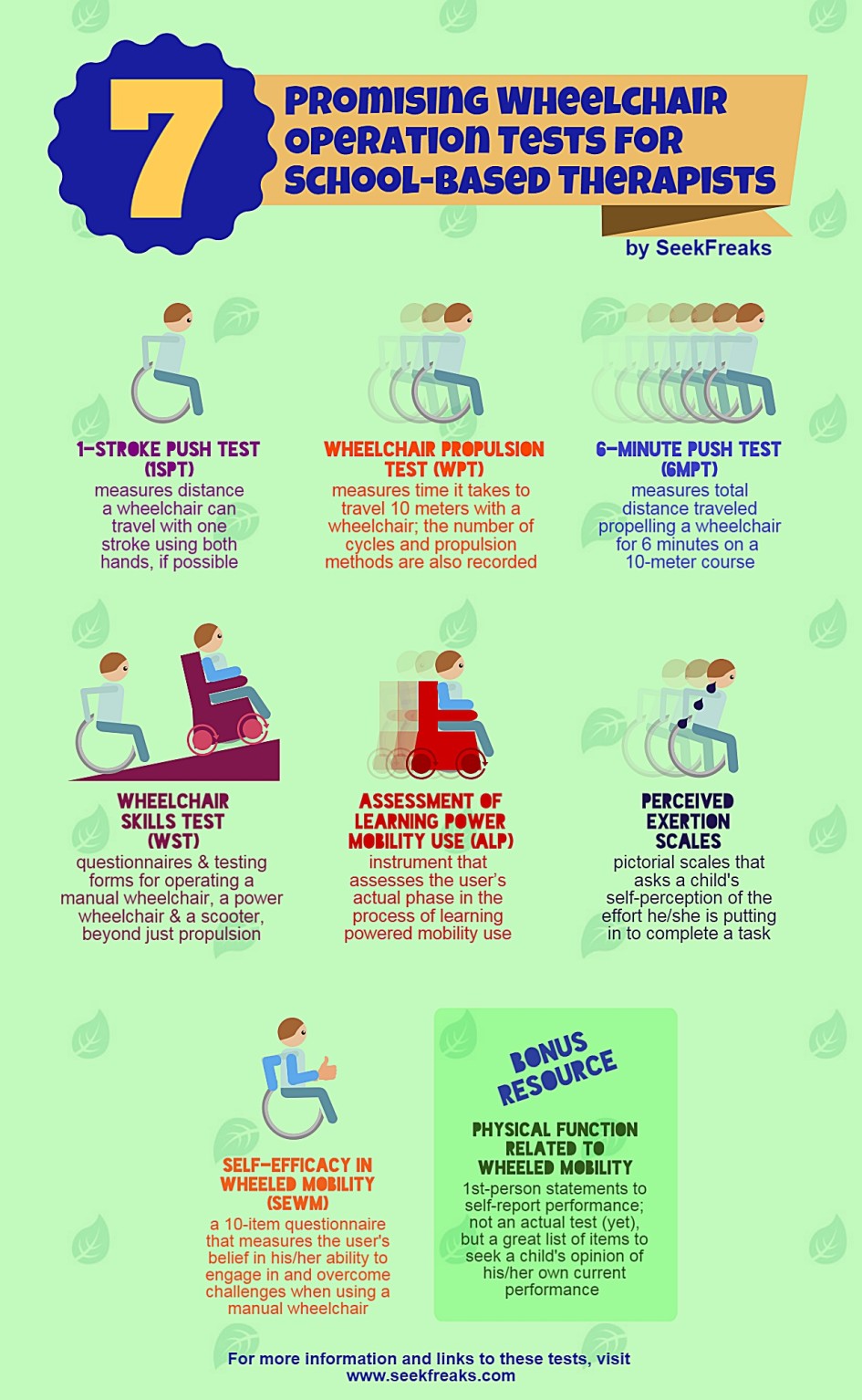
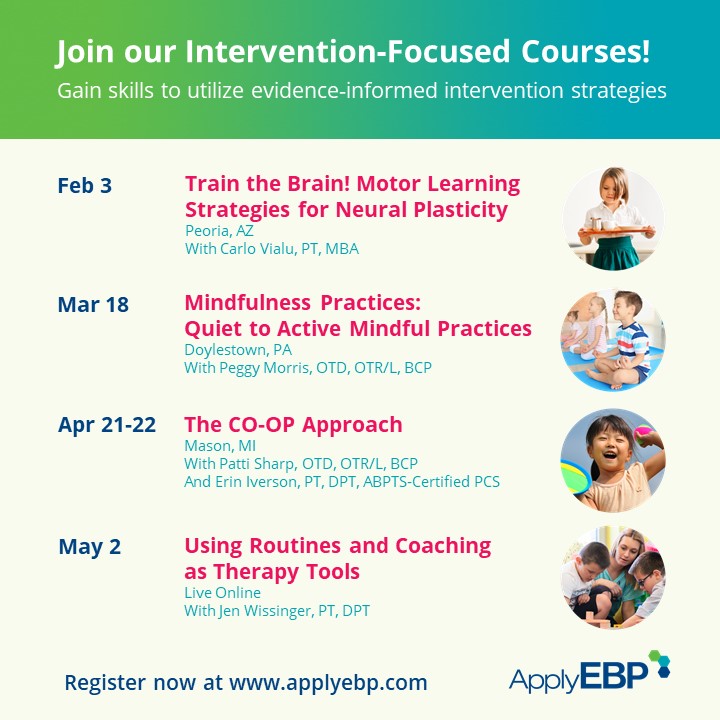
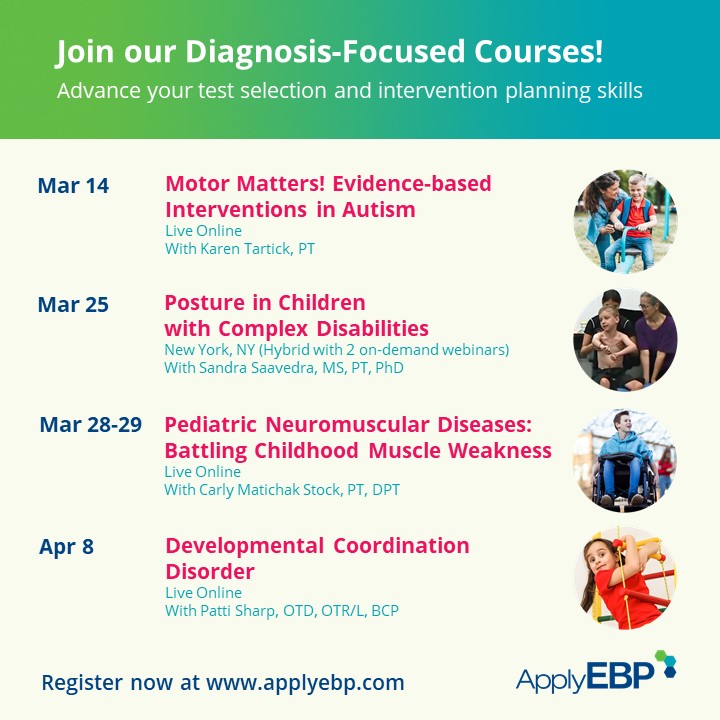
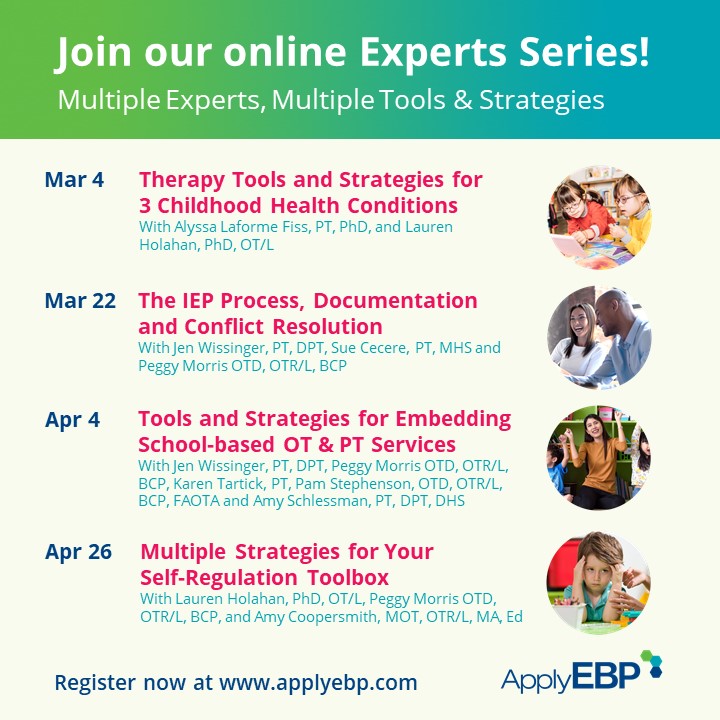
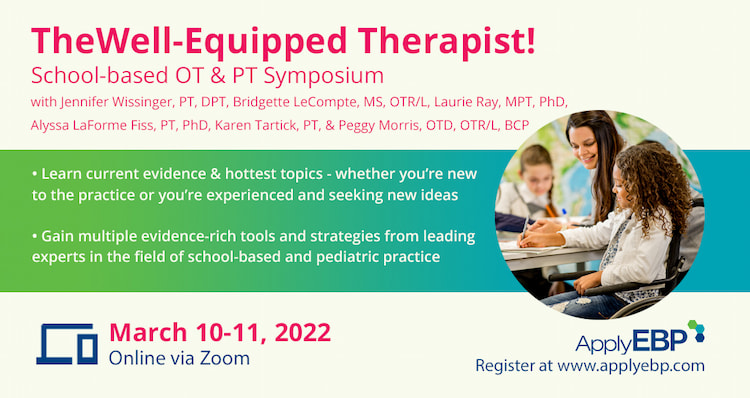











April 26, 2022 at 3:14 pm
Hi! Do you know what a clinically significant improvement would be? Also, what distance would be considered “functional” in 6 minutes?
Thanks!